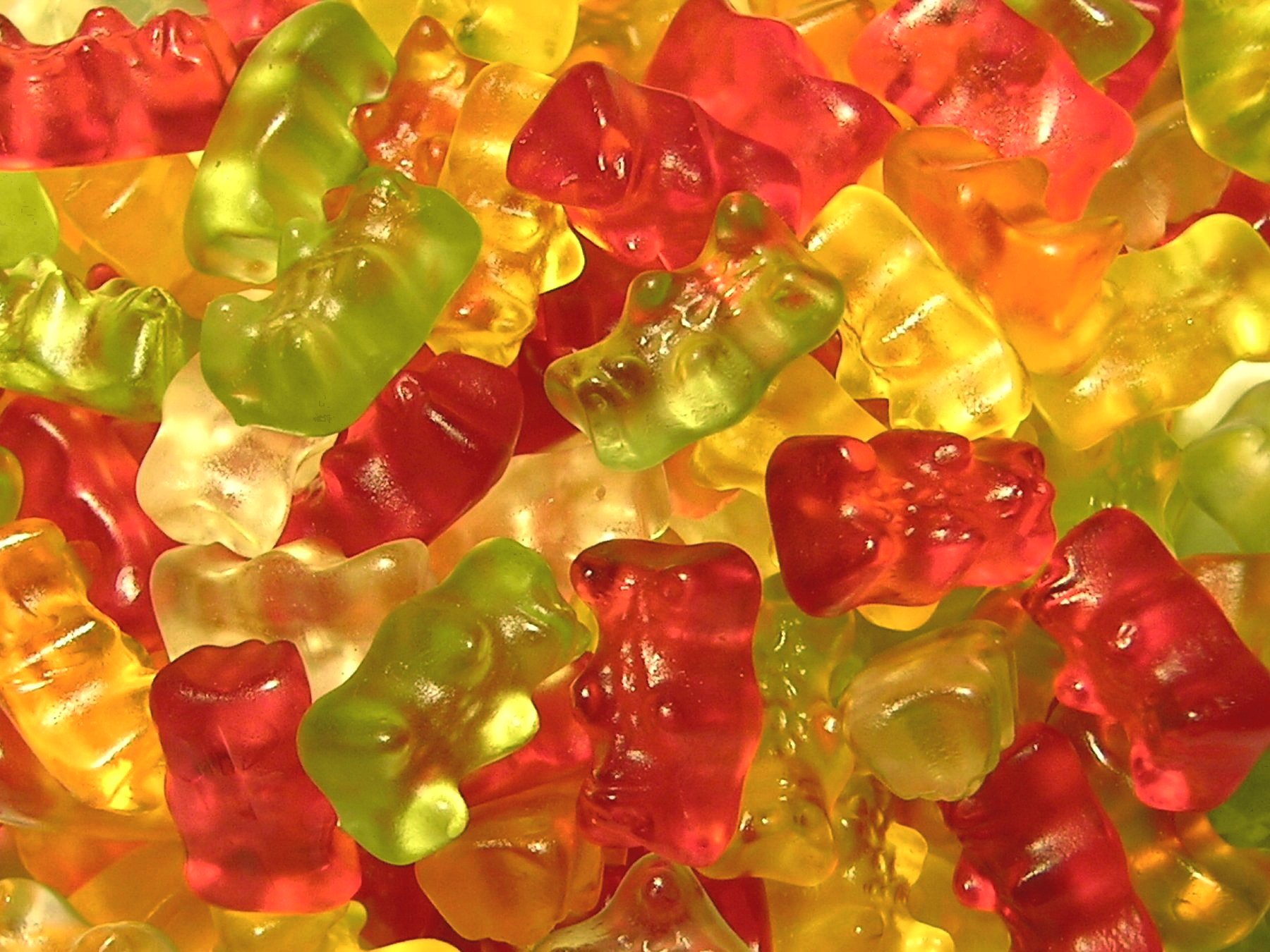HISTORY OF GUMMI CANDY
you know what this lovely look and taste candy is invented by Hans Riegel (the first gummi candy) and during the 1920s. Riegel was the owner of the German candy company Haribo. and It all began in a small backyard shed in a suburb of Bonn, Germany. No one thought at the time that HARIBO would one day be one of the most popular and appealing brands in the confectionery business. Haribo went on to manufacture the first American made gummi candy in 1982. this is their site (http://www.haribo.com) well don't stop believing :D
Another German gummi candy manufacturer called Trolli (then a brand of the German Mederer Corporation, and now part of Kraft Foods) decided to made the first Gummi worms on July 15, 1981, the 60th anniversary of gummi bears.. Gummi worms have become the most popular gummi candy ever made. The average Brite Crawler the number one sold gummi worm is two inches long.
Each gummi worm varies from four inches to ten inches and has two different colors and flavors that mix in the middle of the gummi worm. Some other brands of gummi worms have more than two colors, and are longer than the original Trolli Brite Crawlers, and may have a sour coating or other variations. the variatons are Sour Brite Crawlers, Squiggles, Sour Brite Caterpillars.
 |
| Vending machine for kosher gummi bears at the cafeteria of the Jewish Museum Berlin. |
Woow I wish i have this vending machine....
Ingredients
The traditional gummi bear is made from a mixture of sugar, glucose syrup, starch, flavouring, food coloring, citric acid, and gelatin. However, there are a number of variations with different recipes, such as organic candy, those suitable for vegetarians or those following religious dietary laws.Health issues
Gummi bears ordinarily contain mostly empty calories, but recently gummi bears containing vitamin C, produced by manufacturers such as Sconza or Bear Essentials, are being marketed to parents of young children. Multivitamins have also been produced in the form of gummi bears to motivate consumption by young, picky eaters.Gummi bears, and other gummi candy, stick to teeth and may cause tooth decay.However, gummi bears containing the cavity-fighting additive xylitol (wood sugar) are now being tested.[13]
There has been concern that gelatin in most gummi bears may harbor prions, particularly those that cause BSE / Mad Cow Disease in cattle and CJD in humans.[14] Based on studies, the United States FDA and other national organizations and countries consider the risk of BSE transmission through gelatin to be minuscule as long as precautions are followed during manufacturing.

No comments:
Post a Comment